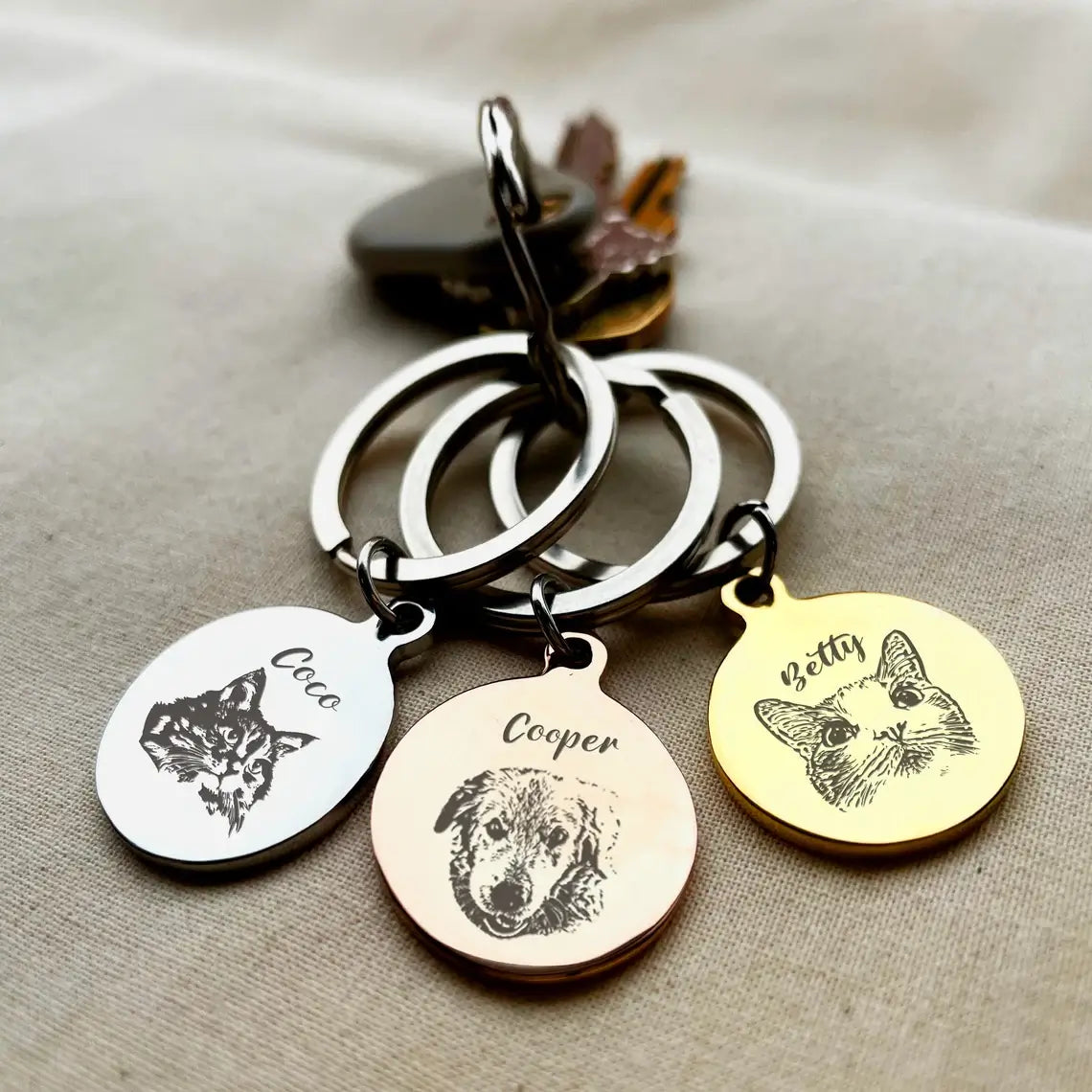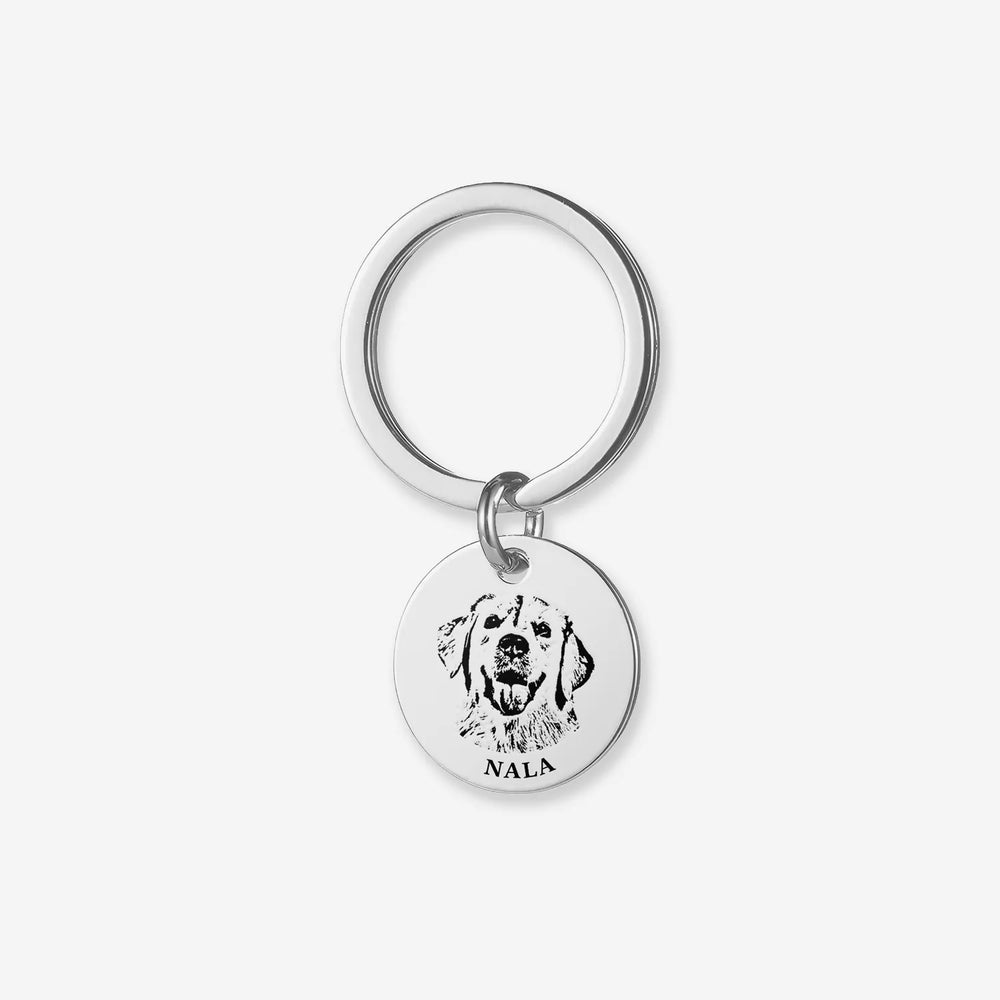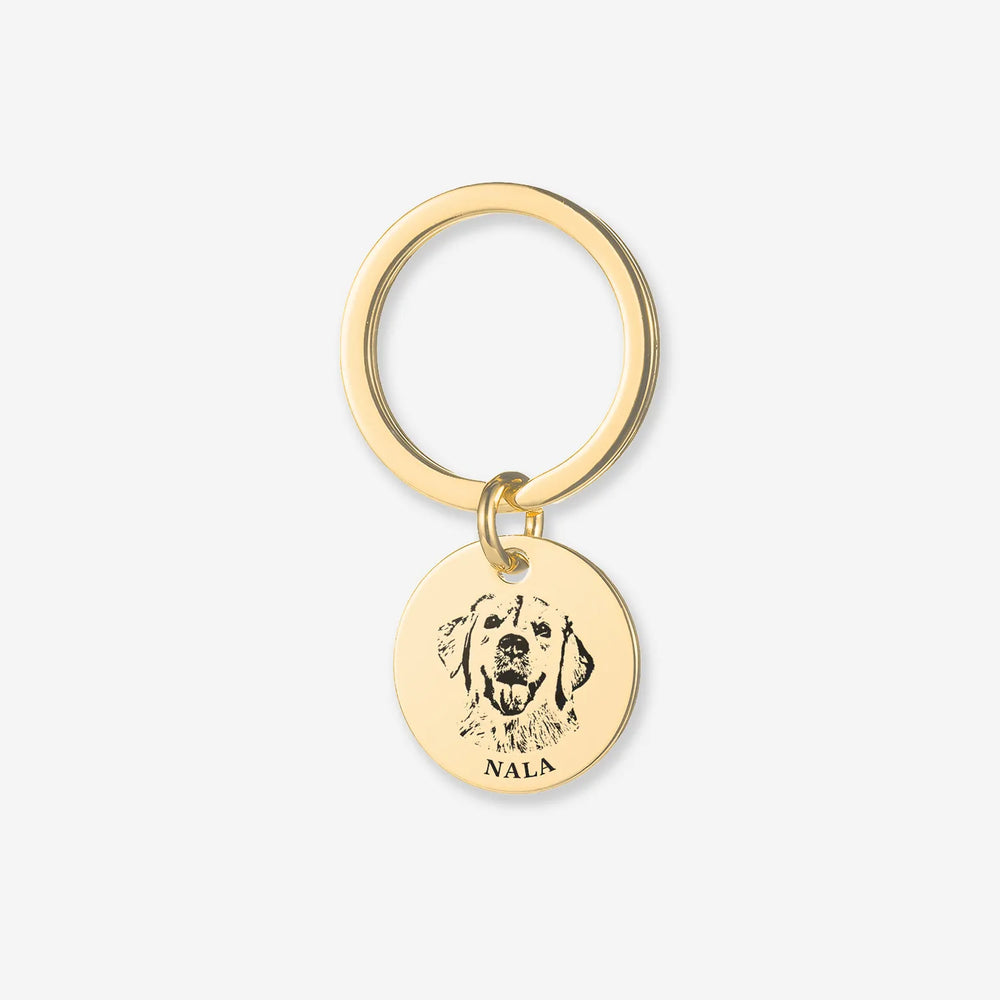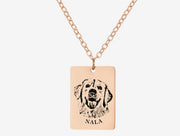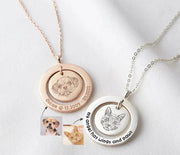Buy One, Get One FREE
Top 10 Most Intimidating Dog Breeds Revealed

Ever wondered why some dogs make you pause in your tracks? The world of dog breeds is vast, with some standing out as the most intimidating dogs. Great Danes, known for their impressive size and stature, tower over many with their massive size. American breeds like the Pit Bull often get a reputation for being fierce. But what makes a breed intimidating? Often, it's a mix of size, strength, and history. Understanding these characteristics helps you see beyond the surface. Remember, accidents can happen when assumptions lead to misunderstandings. Dive into the world of intimidating breeds and discover the truth behind the bark. If you are a pet lover, check out iPetprints for unique pet accessories and products.
Understanding Intimidating Dog Breeds

What Makes a Dog Breed Intimidating?
Physical Traits
Size and strength often make a dog breed intimidating. A Great Dane, with its towering height, can seem overwhelming. The Alaskan Malamute, known for its robust build, also commands attention. Great Pyrenees dogs grow large and fluffy, creating an imposing presence. These physical traits contribute to the perception of intimidation.
Temperament
Temperament plays a crucial role in how intimidating a dog appears. Some breeds, like Pit Bulls, have a reputation for being fierce. This perception often stems from their protective nature. The Great Pyrenees, despite its size, has a gentle temperament. Understanding a dog's behavior helps in assessing its true nature.
Historical Background
History influences how people view certain breeds. The British dog breed, the Bulldog, once served as a guard dog. This historical role adds to its intimidating image. Great Pyrenees dogs historically protected livestock, showcasing their bravery. Knowing a breed's history provides insight into its characteristics.
The Role of Media and Culture
Portrayal in Movies and TV
Movies and TV shows shape perceptions of dog breeds. Great Danes often appear as gentle giants in films. In contrast, Pit Bulls sometimes get depicted as aggressive. This portrayal affects how people view these breeds in real life. Media representation plays a significant role in shaping opinions.
Cultural Perceptions
Cultural beliefs influence how people perceive dog breeds. In some cultures, the Great Pyrenees symbolizes protection and loyalty. Others view the Alaskan Malamute as a symbol of strength. These cultural perceptions impact how people interact with these breeds. Understanding cultural views helps in appreciating each breed's uniqueness.
Top 10 Most Intimidating Dog Breeds

Breed 1: Great Dane
Physical Characteristics
The Great Dane stands out with its impressive height. This breed often reaches up to 32 inches at the shoulder. The massive size of a Dane makes it one of the tallest dog breeds. A muscular build adds to the intimidating presence. Despite the size, the Great Dane has a graceful appearance.
Temperament and Behavior
The Great Dane surprises many with a gentle temperament. This breed often acts like a lap dog despite its size. Friendly and affectionate behavior defines the Dane. Loyalty and protective instincts make it a great family companion. Proper socialization ensures a well-mannered Great Dane.
Care and Training Needs
Caring for a Great Dane requires attention to diet and exercise. A balanced diet supports the large frame of the Dane. Regular exercise keeps the Dane healthy and happy. Training should focus on positive reinforcement. Consistent training helps manage the Dane's size and energy.
Breed 2: Cane Corso
Physical Characteristics
The Cane Corso impresses with a powerful and muscular build. This breed typically weighs between 90 to 120 pounds. A broad chest and strong limbs enhance the Cane Corso's imposing look. A short coat gives the Cane Corso a sleek appearance. The Cane Corso's expressive eyes convey intelligence and alertness.
Temperament and Behavior
The Cane Corso exhibits loyalty and protective qualities. This breed often forms strong bonds with family members. Courage and confidence define the Cane Corso's demeanor. Early socialization helps the Cane Corso interact well with others. A well-trained Cane Corso becomes a devoted and reliable companion.
Care and Training Needs
Caring for a Cane Corso involves regular grooming and exercise. A healthy diet supports the Cane Corso's active lifestyle. Training should emphasize obedience and socialization. Consistent and firm guidance benefits the Cane Corso. Mental stimulation keeps the Cane Corso engaged and content.
Breed 3: Caucasian Ovcharka
Physical Characteristics
The Caucasian Ovcharka, also known as the Caucasian Shepherd Dog, commands attention with its size. This breed can weigh over 200 pounds. A thick double coat provides protection in harsh climates. The strong and sturdy build of the Caucasian Ovcharka enhances its intimidating presence. The breed's large head and powerful jaws add to its formidable appearance.
Temperament and Behavior
The Caucasian Ovcharka displays strong guarding instincts. This breed shows loyalty and devotion to its family. Independent and fearless qualities define the Caucasian Ovcharka. Proper training and socialization help manage the breed's protective nature. A well-socialized Caucasian Ovcharka becomes a trustworthy guardian.
Care and Training Needs
Caring for a Caucasian Ovcharka requires regular grooming. The dense coat needs frequent brushing to prevent matting. A balanced diet supports the breed's large frame. Training should focus on obedience and socialization. Consistent and patient training benefits the Caucasian Ovcharka.
Breed 4: Kangal
Physical Characteristics
Kangal dogs boast a robust and muscular build. The average weight ranges from 90 to 150 pounds, which makes Kangals one of the most formidable breeds. A short, dense coat provides protection against harsh weather. The Kangal's large head and powerful jaws contribute to its intimidating appearance. Image Credit: The Kangal's unique look often earns admiration and respect.
Temperament and Behavior
Kangals exhibit strong protective instincts. Loyalty and devotion define the breed's character. Kangals often form deep bonds with family members. Courage and confidence are hallmark qualities of the Kangal. Early socialization helps Kangals interact positively with others. Image Credit: A well-socialized Kangal becomes a reliable guardian.
Care and Training Needs
Caring for a Kangal involves regular exercise and grooming. A balanced diet supports the breed's active lifestyle. Training should focus on obedience and socialization. Consistent and patient guidance benefits Kangals. Mental stimulation keeps Kangals engaged and content. Image Credit: Proper care ensures a healthy and happy Kangal.
Breed 5: Dogo Argentino
Physical Characteristics
Dogo Argentinos impress with a muscular and athletic build. The breed typically weighs between 80 to 100 pounds. A short, white coat gives the Dogo Argentino a sleek appearance. Strong limbs and a broad chest enhance the breed's imposing look. Image Credit: The Dogo Argentino's striking presence commands attention.
Temperament and Behavior
Dogo Argentinos display loyalty and protective instincts. The breed often forms strong bonds with family members. Courage and determination define the Dogo Argentino's demeanor. Early socialization helps the breed interact well with others. Image Credit: A well-trained Dogo Argentino becomes a devoted companion.
Care and Training Needs
Caring for a Dogo Argentino requires regular exercise and grooming. A healthy diet supports the breed's active lifestyle. Training should emphasize obedience and socialization. Consistent and firm guidance benefits the Dogo Argentino. Mental stimulation keeps the breed engaged and content. Image Credit: Proper care ensures a well-adjusted Dogo Argentino.
Breed 6: American Bulldog
Physical Characteristics
American Bulldogs are known for their strength and muscular build. The breed typically weighs between 60 to 120 pounds. A short coat gives the American Bulldog a sleek appearance. A broad chest and strong limbs enhance the breed's imposing look. Image Credit: The American Bulldog's robust presence often impresses onlookers.
Temperament and Behavior
American Bulldogs exhibit loyalty and protective qualities. The breed often forms strong bonds with family members. Courage and confidence define the American Bulldog's demeanor. Early socialization helps the breed interact well with others. Image Credit: A well-trained American Bulldog becomes a reliable companion.
Care and Training Needs
Caring for an American Bulldog involves regular exercise and grooming. A balanced diet supports the breed's active lifestyle. Training should focus on obedience and socialization. Consistent and patient guidance benefits the American Bulldog. Mental stimulation keeps the breed engaged and content. Image Credit: Proper care ensures a healthy and happy American Bulldog.
Breed 7: Gull Dong
Physical Characteristics
The Gull Dong stands out with a muscular and athletic build. This breed typically weighs between 80 to 100 pounds. A short coat gives the Gull Dong a sleek appearance. A broad chest and strong limbs enhance the breed's imposing look. The Gull Dong's robust presence often impresses onlookers. Image Credit: The Gull Dong's striking physique commands attention.
Temperament and Behavior
Gull Dongs exhibit fierce loyalty and protective instincts. The breed often forms strong bonds with family members. Courage and determination define the Gull Dong's demeanor. Early socialization helps the breed interact well with others. A well-trained Gull Dong becomes a devoted companion. The Gull Dong's temperament makes it one of the scariest dog breeds.
Care and Training Needs
Caring for a Gull Dong requires regular exercise and grooming. A healthy diet supports the breed's active lifestyle. Training should emphasize obedience and socialization. Consistent and firm guidance benefits the Gull Dong. Mental stimulation keeps the breed engaged and content. Proper care ensures a well-adjusted Gull Dong.
Breed 8: German Shepherd
Physical Characteristics
The German Shepherd impresses with its strong and agile build. This breed typically weighs between 65 to 90 pounds. A dense double coat provides protection in various climates. The German Shepherd's erect ears and alert expression convey intelligence. The breed's athletic physique makes it one of the scariest dog breeds. Image Credit: The German Shepherd's iconic look often earns admiration.
Temperament and Behavior
German Shepherds display intelligence and versatility. The breed often serves as police and military dogs. Loyalty and confidence define the German Shepherd's character. Early socialization helps the breed interact positively with others. A well-trained German Shepherd becomes a reliable guardian. The breed's temperament makes it a popular choice for families.
Care and Training Needs
Caring for a German Shepherd involves regular exercise and grooming. A balanced diet supports the breed's active lifestyle. Training should focus on obedience and mental stimulation. Consistent and patient guidance benefits the German Shepherd. Proper care ensures a healthy and happy German Shepherd. The breed's intelligence requires engaging activities to prevent boredom.
Breed 9: Rottweiler
Physical Characteristics
The Rottweiler stands out with its robust and muscular build. This breed typically weighs between 80 to 135 pounds. A short coat gives the Rottweiler a sleek appearance. A broad chest and strong limbs enhance the breed's imposing look. The Rottweiler's powerful presence often impresses onlookers. Image Credit: The Rottweiler's striking physique commands attention.
Temperament and Behavior
Rottweilers exhibit loyalty and protective qualities. The breed often forms strong bonds with family members. Courage and confidence define the Rottweiler's demeanor. Early socialization helps the breed interact well with others. A well-trained Rottweiler becomes a devoted companion. The breed's temperament makes it one of the scariest dog breeds.
Care and Training Needs
Caring for a Rottweiler requires regular exercise and grooming. A healthy diet supports the breed's active lifestyle. Training should emphasize obedience and socialization. Consistent and firm guidance benefits the Rottweiler. Mental stimulation keeps the breed engaged and content. Proper care ensures a well-adjusted Rottweiler.
Breed 10: Tibetan Mastiff
Physical Characteristics
The Tibetan Mastiff stands out with its massive size and thick coat. This breed often weighs between 70 to 150 pounds. The dense fur provides protection against harsh weather. A broad head and strong jaws enhance the breed's formidable look. Many people admire the Tibetan Mastiff's majestic appearance.
Temperament and Behavior
Tibetan Mastiffs exhibit strong protective instincts. Loyalty defines the breed's character. Tibetan Mastiffs often form deep bonds with family members. Courage and independence are hallmark qualities of the breed. Early socialization helps Tibetan Mastiffs interact positively with others. The breed's temperament makes it a reliable guardian.
Care and Training Needs
Caring for a Tibetan Mastiff involves regular grooming and exercise. A balanced diet supports the breed's active lifestyle. Training should focus on obedience and socialization. Consistent and patient guidance benefits Tibetan Mastiffs. Mental stimulation keeps the breed engaged and content. Proper care ensures a healthy and happy Tibetan Mastiff.
The Importance of Training and Socialization
Training and socialization play a crucial role in shaping the behavior of intimidating dog breeds like the Dogue de Bordeaux, English Mastiff, and Fila Brasileiro. Proper training ensures that these breeds become well-mannered companions rather than sources of concern. Let's dive into some effective techniques and strategies.
Training Techniques
Positive Reinforcement
Positive reinforcement stands as a powerful tool in dog training. Rewarding good behavior encourages dogs to repeat those actions. Treats, praise, or playtime work wonders as rewards. Consistency in using positive reinforcement helps dogs understand expectations. This approach builds trust and strengthens the bond between you and your dog.
Consistency and Patience
Consistency remains key in training intimidating breeds like the Mastiff. Repeating commands and routines helps dogs learn faster. Patience is essential when dealing with large breeds. Training takes time, but patience pays off. Dogs respond better when they feel understood and respected.
Socialization Strategies
Early Exposure
Early exposure to different environments benefits breeds like the Dogue de Bordeaux. Introducing puppies to various sights, sounds, and people helps them adapt. Early socialization reduces fear and anxiety in new situations. Confident dogs handle changes with ease.
Controlled Environments
Controlled environments provide safe spaces for socialization. Supervised interactions with other dogs teach important social skills. Parks or training classes offer opportunities for positive experiences. Controlled settings prevent overwhelming situations for dogs.
Scientific Research Findings:
-
A study on dog breed behavior highlights the importance of early socialization. Researchers found that puppies exposed to diverse environments showed fewer behavioral issues later in life. This finding underscores the value of starting socialization early.
Training and socialization transform intimidating breeds into gentle giants. The Dogue de Bordeaux, English Mastiff, and Fila Brasileiro thrive with proper guidance. Embrace these techniques to nurture a well-rounded companion.
Understanding intimidating dog breeds like the German Shepherd Dog is crucial for responsible ownership. Each breed, from the German Shepherd to the Newfoundland, has unique traits and needs. Responsible owners recognize these differences and provide the right care and training. Consider individual personalities when choosing a breed. The Newfoundland dog, for example, offers gentle companionship despite its size. Photos of these breeds often highlight their impressive features. Remember, every German dog breed or Newfoundland deserves a loving home. Embrace the diversity of breeds, including Terriers and Boxers, and enjoy the journey with your furry friend.
